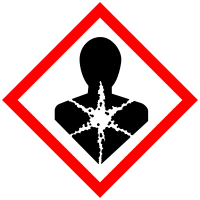
Improving Member States preparedness to face an HNS pollution of the Marine System (HNS-MS)
Undecylbenzene
Description Top
| CAS number | 67774-74-7 |
| Chemical formula | C6H5CnH2n+1 (n=10-13) |
| Standard European Behaviour Classification (SEBC) | Evaporator (E) |
GESAMP Hazard profile
| A1 | A2 | B1 | B2 | C1 | C2 | C3 | D1 | D2 | D3 | E1 | E2 | E3 |
| NI | NI | NI | NI | NI | NI | NI | NI | NI | NI | E | NI |
Marine pollution Classification (MARPOL Annex II)
| Category | Description |
| Y | Noxious Liquid Substances which, if discharged into the sea from tank cleaning or deballasting operations, are deemed to present a hazard to either marine resources or human health or cause harm to amenities or other legitimate uses of the sea and therefore justify a limitation on the quality and quantity of the discharge into the marine environment. |
Alternate names for this chemical
Benzene, C10-C13 Alkyl Derivs
Undecylbenzene
Benzene, Derives En Alkyle C10-13
Undecylbenzene
Benzene, Derives En Alkyle C10-13
Physico-chemical properties Top
| Chemical formula | C6H5CnH2n+1 (n=10-13) | |
| Molar mass | 239 [g/mol] | |
| State | Liquid at 25°C and 1 atm | |
| Fusion temperature | -70 [°C] | |
| Boiling temperature | 298 [°C] | |
| Density |
|
|
| Hydrosolubility |
|
|
| Vapour pressure |
|
|
| Henry's constant | 95 [mol/(m³·Pa)] |
Behaviour Top
| Log Kow | 7.5 |
| Log Koc | 4.34 |
| Standard European Behaviour Classification (SEBC) | Evaporator (E) |
| Bioconcentration factor (BCF) | 35 |
Ecotoxicity Top
| Lowest median lethal concentration (LC50) on crustacean | 0.01 [mg/l] |
| Lowest median lethal concentration (LC50) on fishes | > 1000 [mg/l] |
| Highest no observed effect concentration (NOEC) on algae | > 1000 [mg/l] |
| Highest no observed effect concentration (NOEC) on crustacean | 0.01 [mg/l] |
Hazards Top

Danger
Hazards statements
Health
H304
May be fatal if swallowed and enters airways.
Precautionary statements
Response
P331
Do NOT induce vomiting.
P301 + P310
IF SWALLOWED: Immediately call a POISON CENTER or doctor/physician.
Storage
P405
Store locked up.
Disposal
P501
Dispose of contents/container to ...
GESAMP Top
GESAMP Hazard profile
| A1 | A2 | B1 | B2 | C1 | C2 | C3 | D1 | D2 | D3 | E1 | E2 | E3 |
| NI | NI | NI | NI | NI | NI | NI | NI | NI | NI | E | NI |
A1: Bioaccumulation
| Rating | Description |
| NI | No Information |
A1a:
| Rating | Description |
| NI | No Information |
A1b:
| Rating | Description |
| NI | No Information |
A2: Biodegradation
| Rating | Description |
| NI | No Information |
B1: Acute aquatic toxicity
| Rating | Description |
| NI | No Information |
B2: Chronic aquatic toxicity
| Rating | Description |
| NI | No Information |
C1: Acute oral toxicity
| Rating | Description |
| NI | No Information |
C2: Acute dermal toxicity (skin contact)
| Rating | Description |
| NI | No Information |
C3: Acute inhalation toxicity
| Rating | Description |
| NI | No Information |
D1: Skin irritation or corrosion
| Rating | Description |
| NI | No Information |
D2: Eye irritation
| Rating | Description |
| NI | No Information |
D3: Long-term health effects
| Notation | Hazard endpoint | Description | GHS category |
| No Information |
E1: Tainting of seafood
| Rating | Description |
| NI | No Information |
E2: Behaviour of chemicals in the marine environment
| Rating | Description |
| E | Evaporator |
E3: Interference with the use of coastal amenities
| Rating | Description |
| NI | No Information |
GHS Security Information

Danger
About the project
HNS-MS is a decision-support tool that Belgian and French maritime authorities as well as coastguard stations can activate in order to forecast the drift, fate and behavior of acute marine pollution by Harmful Noxious Substances (HNS) accidentally released in the marine system.
Contact us
Copyright © 2015–2026 HNS-MS Consortium
 HNS-MS has been funded by DG-ECHO under agreement ECHO/SUB/2014/693705 and runs from 1 January 2015 to 31 March 2017.
HNS-MS has been funded by DG-ECHO under agreement ECHO/SUB/2014/693705 and runs from 1 January 2015 to 31 March 2017.